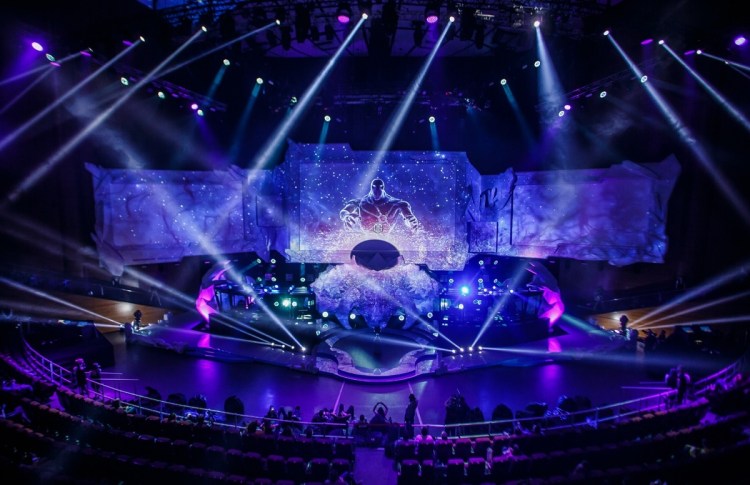Esports has become a billion-dollar industry, but if it is going to get much bigger, then brands have to buy into it in a much bigger way when it comes to sponsorships.
Those brands have to chase after millennials, who aren’t watching as much TV or sports as previous generations. It can be easier to reach them with games, esports, and digital media. But to be effective, the brands have to find an authentic voice that speaks to the new generation. We talked about these issues in a panel at CES 2020, the big tech trade show in Las Vegas.
Our panel included Josh Cella, head of global partnerships for Activision Blizzard Esports; Grace Dolan, vice president of home entertainment integrated marketing at Samsung Electronics America; Sarah Iooss, head of sales for Americas at Twitch; and Bryan de Zayas, global director of marketing at Dell.
Here’s an edited transcript of our panel. If you prefer, you can watch it on video here.
June 5th: The AI Audit in NYC
Join us next week in NYC to engage with top executive leaders, delving into strategies for auditing AI models to ensure fairness, optimal performance, and ethical compliance across diverse organizations. Secure your attendance for this exclusive invite-only event.
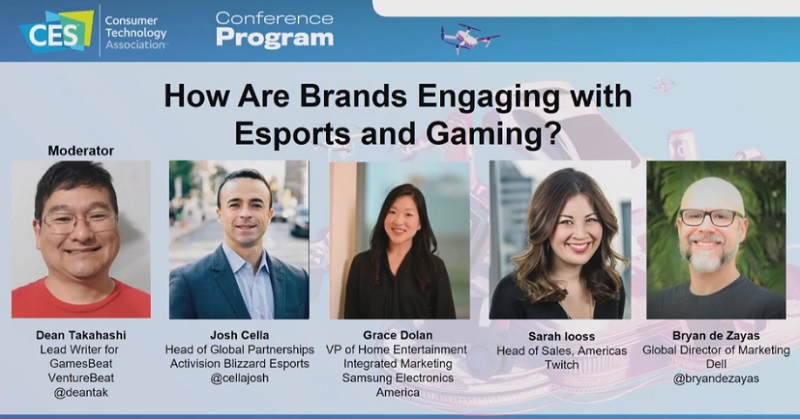
Above: Brands, gaming, and esports panel at CES 2020.
Josh Cella: I oversee the partnership business for Activision Blizzard in esports. I’ve been with the company for four years, since before the Overwatch League launch, up to where we are today going into season three of the Overwatch League and launching the Call of Duty league in two weeks.
Grace Dolan: I’m the vice president of integrated marketing for the home division of Samsung. I’ve been at Samsung for about three years, and during that time is when we started to look and learn more and invest in this gaming community and audience.
Sarah Iooss: I lead the amazing sales team at Twitch for North America. I joined about seven months ago. I’m happy to be here to tell everyone about the incredible Twitch community.
Bryan de Zayas: I manage Alienware and Dell from a global marketing perspective for Dell. I’ve been in the gaming space with Alienware since 2003, so going on a lot of years.
GamesBeat: The CTA did its own study recently, and they said esports sponsorship totals jumped from $342 million in revenue in 2018 to $470 million in 2019. Advertising increased from $176 million to $220 million over the same time. Esports is hot. We’ve established that. But tell us why gaming and esports are important to your brands.
Cella: Activision Blizzard is historically a game creator. We have three different publishing units — Activision, Blizzard, and King — across console, PC, and mobile games. That’s the heartbeat of our company. That’s where all the value is, and the history with our fans around the world. We’ve started to develop other businesses like esports that are tapping into that passion. It’s what we do on a daily basis.
Dolan: I’d probably argue that this is at the heartbeat of what you guys do. I’m probably the least endemic of the brands here. In my view, gaming, with esports included under that umbrella, is just critical. If you look at what gaming is today, it’s not a niche interest the way it’s historically been perceived. If you look at the number of consumers in the U.S. that are gaming, it’s 67-68%. More Americans are gaming than are not. It’s just part of mainstream entertainment, and it’s a passion point.
As a TV manufacturer, we’re very closely related to the hardware that connects and gives gamers these gaming experiences. For me it’s about understanding this audience, and from an innovation point, understanding how we can make our products better so the gaming experience can be better. And then from a marketing and relationship-building perspective, how do I understand you better so I can be more relevant to you in everything that we do and every way we interact?
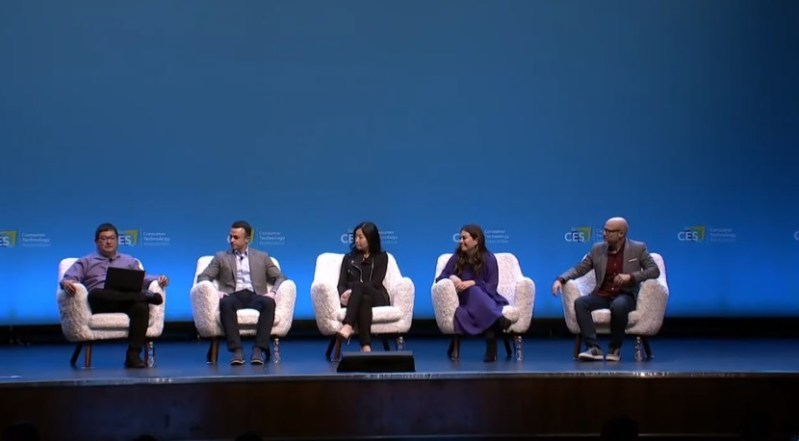
Above: Left to right: Dean Takahashi of GamesBeat, Josh Cella of Activision Blizzard, Grace Dolan of Samsung, Sarah Iooss of Twitch, and Bryan de Zayas of Dell/Alienware.
Iooss: Gaming is the foundation of Twitch. It’s the lifeblood. It’s where we began. It represents a huge opportunity. That’s the word I would use, as a jumping-off point to build this incredible community that’s expanded beyond gaming and beyond esports. We’re growing right along with the industry. It certainly is the foundation.
De Zayas: For Alienware, gaming is at the foundation as well. The company was founded with the goal of making PCs that make it easier for gamers to do what they want to, which is play video games. That’s very much at the foundation. When we’re building new technology and new innovation — as it pertains to the people in the audience, when you’re thinking about gaming and the marketplace and how you can participate, it’s important to know what your lane is. What can you own and drive? At Alienware we believe we can deliver the best technology for gamers. That’s the role we play, and why gaming is so important to us.
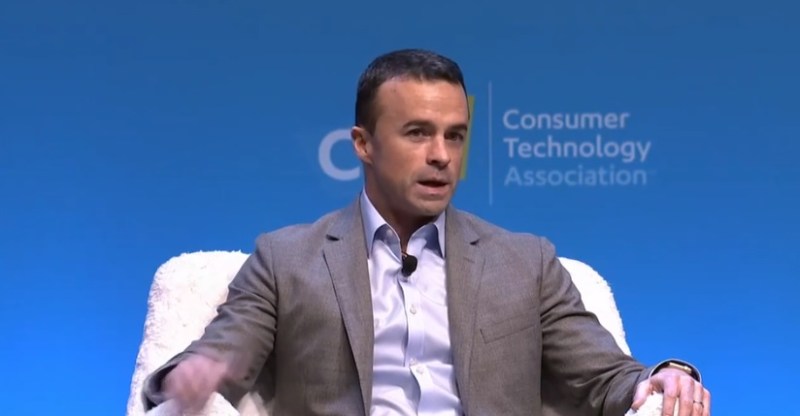
Above: Josh Cella, head of global partnerships at Activision Blizzard Esports.
GamesBeat: We can agree that traditional sports is still bigger in a lot of ways. My question is, why? If all these demographic numbers tell us that gaming is this important and esports is growing and the audiences are bigger, why is the NBA still so big? Why have those brand dollars not shifted over to gaming?
Cella: I get that question from my CEO. We do compare ourselves a lot to traditional sports. We’ve taken a lot of those elements, what we think are the best elements of structure and consistency from traditional sports leagues, and then we’ve tried to layer in new elements that we’ve been able to innovate.
Overwatch League, to use that as the example, is going into its third season, and traditional sports leagues have been around for decades, 50 years or more in some instances. The other thing we run up against, because we do deal with that comparison, and not really joking — they never really had the commercial expectations that we have back then. They started as a way to organize sports and grew from there. We’re coming around in an age when there are higher expectations from a monetization standpoint.
We’re fine with that. Everything is growing very healthily. We think the potential is absolutely there. The power of gaming is that it’s ubiquitous. When Blizzard launches a game, the next day, anyone who has a PC and has WiFi available can access that game. You can hit a light switch and that game is live everywhere. That power doesn’t exist in traditional sports. As an industry we’re tapping into that. It’s going to take some time, but we’re on a great track for it.
Iooss: We’re at that acceleration point. When you think about fandom, the fans and the experience, there’s a lot we borrow from traditional sports, or that we’re inspired by. The point we’re at now for esports is just organization, opportunity, investment, an economy around it. What’s happening now is that there’s a lot of ways they can play together and be inspired by one another, but we wouldn’t be up here if we didn’t think that esports is going to go even further.
De Zayas: To add on to it, you asked why traditional sports are ahead in that regard. I also think it’s generational. Esports, if you think about it, it probably started around 2005. This is a very young market. When you think of traditional sports like football or basketball, it feels like they’ve been around since the beginning of time. Where are in the digital age, it’s going to accelerate super fast. A hundred years go by, or it might just take us 10 years in digital time.
GamesBeat: For Dell and Alienware, how long would you say has it been since you really got comfortable and dove into esports?
De Zayas: Right around 2005 is when Alienware started seeing the potential of what esports could be, sponsoring and doing awards around tournaments at the time. Giving out gift prizes, things like that. But back then it was very different. You’d go to physical events, like E3 or PAX. That’s where these events would happen. Today you have things like the Overwatch League and other leagues out there where you have stadiums built for it. That transition, or that evolution, has been pretty quick when you think about it. You’re talking about 12-14 years. It’s not that long.
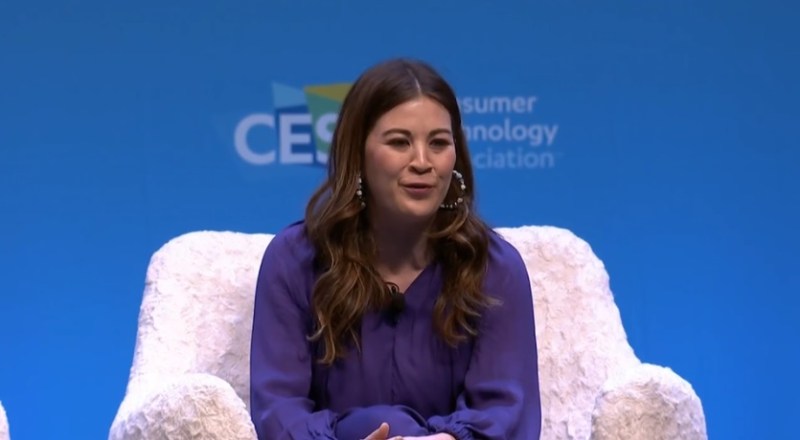
Above: Sarah Iooss is head of sales for Twitch Americas.
Iooss: Also, the opportunity for the way you can consume esports — it’s collapsing the distance between the professional and the fan. There’s a way to interact with them, especially on Twitch, which is really special. It’s that proximity. It’s the way you can feel there’s zero distance between you and the athlete.
GamesBeat: Getting back to why traditional sports are still bigger than esports, there’s a role that brands play here. They’re not automatically swapping those dollars around just yet. I’m assuming there’s a period of time where they’ll pause and get comfortable with this. Is that fair to say, that everyone had to go through a process of getting comfortable with it?
Dolan: Certainly, and that goes to Sarah’s point about investment. It all adds up together to create this larger infrastructure of esports. I don’t think anyone is comfortable with esports investment yet. That’s because no one really knows for sure what’s the right way to do it, because there isn’t a sound infrastructure yet.
With traditional sports, what’s easy is — here are the sports, and within each sport, there’s a certain audience segment that follows it. You match up your demos like clockwork. That same universe lives within gaming as well. We all know that a person who plays Forza is completely different from someone who plays Overwatch. But we’re just starting to really pull those segmentations together to create infrastructure for branding investment.
No one is certain how to do it. But if we use all the traditional learnings about how you invest your marketing dollars within any interest or passion area, it’s very similar. I think there’s just a world of opportunity. We’re getting there.
GamesBeat: Bryan, your comfort level has probably ratcheted up a bit.
De Zayas: Yeah. A bit of a difference there is just where our brand started and where we were formed. It was in gaming. Being native to the landscape, we understood — OK, great, people are playing games. They’re playing competitively. People are watching them online. Enjoying that makes sense to me.
We have ratcheted up across esports over these last several years. To Grace’s point, it’s starting to now get to — there’s more infrastructure. There’s more around how you can go activate these kinds of partnerships. What we think we can do is help move that on through technology. But for the investment piece, there needs to be infrastructure.
GamesBeat: If we’re going to be helpful to the audience, what would be your recommendation as far as how they should pull the trigger on going into games and going into esports?
Cella: We’ve talked to people across the board. To your point, all brands are doing their own due diligence and have different comfort levels already established. There’s a lot of different entry points. Twitch offers a variety of them. What we’re focused on is developing these professional leagues, very similar to traditional sports. There’s individual streamer relationships. There’s a variety. It’s hard for us to speak to it. We obviously think the esports league, the development we’ve helped usher in, has created a lot of the security for people to invest in. That’s where we’re making the large bet.
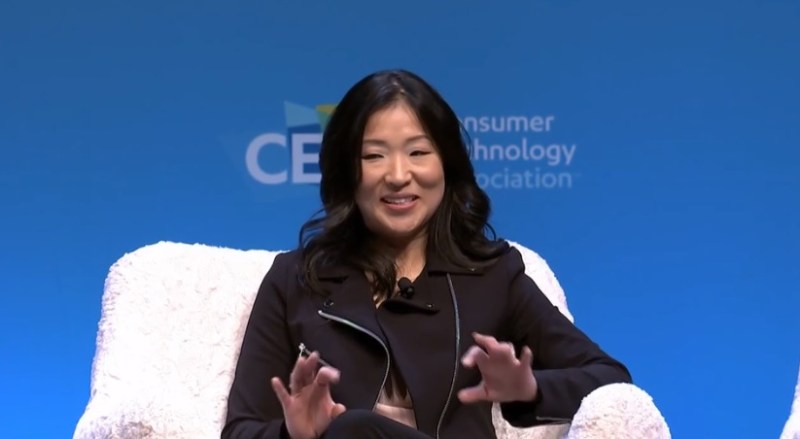
Above: Grace Dolan is vice president of home entertainment integrated marketing at Samsung Electronics America.
Dolan: I would start, foundationally, when you’re thinking of investing in anything — first, where’s your audience? Is your audience for your brand here in this specific world, whether it’s the Overwatch League or some other area of esports that you might be evaluating? And then returns. That’s obviously a huge question. What are the returns you can expect on your investment?
What’s great about gaming is that so much of it is digitally grounded. It’s easy to see what is your reach, how many impressions you’re really making. Then you just test. We’ve worked with Twitch extensively to just start piloting little things. For the monitor business, and also the SSD business, which is also under my portfolio, we did the first IRL rig build. We thought, “I don’t know, do you think people will like it?” It turns out they loved it. OK, you get that this is important. Pilot and go from there.
Iooss: I would actually say — first and foremost, there’s nothing to be scared of, especially when you root it in audience. We often tell our partners that a great first step in is to just come on to our platform. You’ll reach a ton of 18-34 year-olds. Run your beautiful creative there. That’s a way to begin.
I would give a big shout-out to Grace and her team, because the key thing they did was listen and evolve in the moment. We’ve done remarkable work together, and a lot of it has to do with their willingness to test and evolve and listen. Both listening to the Twitch audience, but also to the team at Twitch and vice versa.
Dolan: It’s the same with Blizzard. We supported BlizzCon this year.
Cella: Absolutely. I was just going to add, there’s a huge investment in measurement to make investors feel secure in making that investment. From day one we hired Nielsen to come up with the AMA that allows brands to compare a rating versus a traditional sports rating in specific demographics. We have a whole slew of other measurement vendors we hire, and we pay for all of that ourselves, because we know that there was uncertainty in the beginning, going back a few years, and there still is. We want to combat that by having all these tools so that we can measure the investment and make sure every brand feels secure.
GamesBeat: Across esports, does everyone feel that there’s enough data there already being collected and shared with brands, to the point that they can make good decisions? Or is there still a fair amount of work to do?
Cella: We didn’t think there was previously. In 2018 when we launched the Overwatch League, we made it our top priority to bring Nielsen in and compare us to traditional sports. We knew — we sent out the first press release on our average minute audience. A very prominent reporter wrote back to us saying, “Thank you very much for being the first esports organization to give me something that I can compare to an NBA rating.” That was hugely important to us. We had the confidence to put ourselves up against traditional sports. Every company is adding and layering on more measurements. We’re in a much better place now than we were a few years ago.
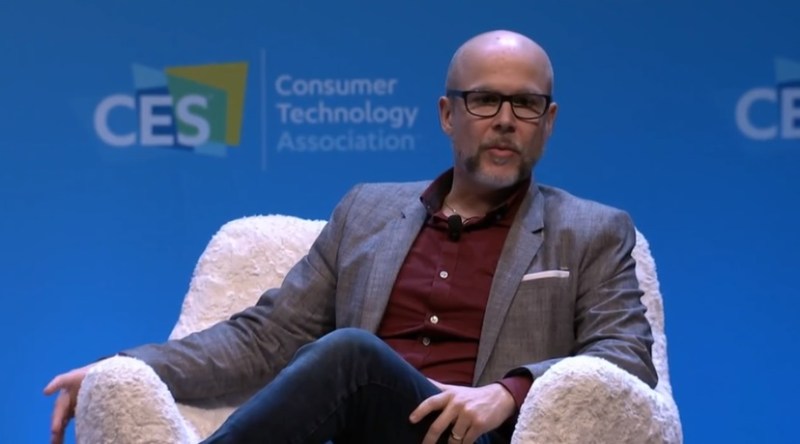
Above: Bryan de Zayas, global director of marketing at Dell.
De Zayas: I’d completely agree. We’re in a very different place, and that’s why I think this digital age–it’s moving us so quickly together and capturing information to be able to understand. Are your investments paying off for you? You can put a lot of money behind technology. You can put up a lot of money from a marketing perspective. But you need to know if you’re going to get that return.
If you’re looking to invest in gaming and esports, it’s definitely something, to know and ask for that data back. But what I would say is–there’s that monetary piece, of course. But remember who you’re talking to and who this audience is. It’s young people that are out there and they’re very passionate about gaming. If you’re looking to invest and get into the space, focus on what helps that gamer get closer to what they want. If you make it easy for them to play games, to watch, to enjoy a large-screen TV as they play their favorite games, whatever piece of technology that is, they’re going to want your product or your service. Making sure that’s what your honing in on, that’s my recommendation.
GamesBeat: “Authenticity” is a very big word with gamers. I assume there are ways to go into this and screw it up, because you’re not being authentic. I wonder if you could address that, things to think about or be careful about, and how to find your authentic brand message and authentic activations.
Iooss: I’d start by saying that on Twitch, there are so many paths for it to be authentic. There’s a lot of native and organic ways the community behaves. They want those things to be powered by the advertisers, because they understand that economy. They’re there to support their favorite streamers, and their streamers mean–it’s not just their gameplay that makes them fans. It’s often their personality. They’re supporting them monetarily in many cases. Whether it’s bits or subscriptions, brands getting involved in those native pathways on the platform are great authentic ways in.
Again, I would also say that–often we’re mythbusting. All of us who work in gaming, we’re mythbusting all the time. It’s true, authenticity is important, but also, this is just part of culture. Gaming is culture. You can run great creative and target an audience just like you can in other parts of culture and entertainment. But when you’re ready to go deeper that authenticity becomes a lot more important, and you should trust your partners to help you find those good pathways in.
Dolan: We rely heavily on our partners. Obviously we’ve discussed, peripherally, how we’ve been working with Twitch. They’ve been a phenomenal partner for Samsung. But over the last couple of years we’ve also partnered with Xbox. The reason was, we first began realizing how important gamers were to our TV business around 2016. We realized it was a motivation for consumers to upgrade their TVs. You’re playing a shooter game and your TV’s refresh rate doesn’t match your console’s framerate, you die. You get shot. It sucks. Consumers were saying, “I need a new TV that can keep up.” So how do we make sure that our TVs can always keep up?
We started partnering with gaming industry experts. Not just to gain credibility with this audience, but to really understand what was important to gamers. If you look at our TVs today, all of the gaming features we’ve added–hands-on, I can sell my kids on this one. We have the best gaming TVs on the market, and they’re all grounded in insights.
One example I love to give is campers. Who likes campers, right? Boo. But we have a feature we just launched this past year called dynamic black equalizer. It’s for all those creepers and campers who are in a scene hiding out. You can find them on our TVs now. It’s all about giving gamers an advantage, and just making the experience better and more fun. Lowering the input lag to record-breaking levels. Just keeping up. We rely on our partners to help us understand this audience well enough to know what’s important and how we can implement that in our innovation road maps.
Adaptive sound is another example. We have this thing called object tracking sound. It uses AI to be able to identify, on the screen, where a sound is coming from. You can have a more immersive and enhanced experience, but also be able to hear your enemies. It’s cool stuff.
De Zayas: I would add that, don’t be dissuaded — if you have a new product, feature, software, whatever it might be, and you put it out there and you’re gathering feedback — if you get a negative response initially from gamers. Gamers are extremely passionate and very vocal about what they like and what gets them to enjoy their favorite game, their favorite pastime. But it’s very much appreciated by that target audience of gamers that you’re asking.
They may tell you that you suck and you shouldn’t ever do this, but inside, they enjoy that you’ve asked them. The next time you come back and ask, you’re building a rapport over time. It’s hard to get into a gamer’s mindset, but once you’re there, you’re there for life, as long as you don’t screw it up. Don’t be afraid to ask. Don’t be afraid to take chances. Listen and adapt and you’ll be very much appreciated for it.
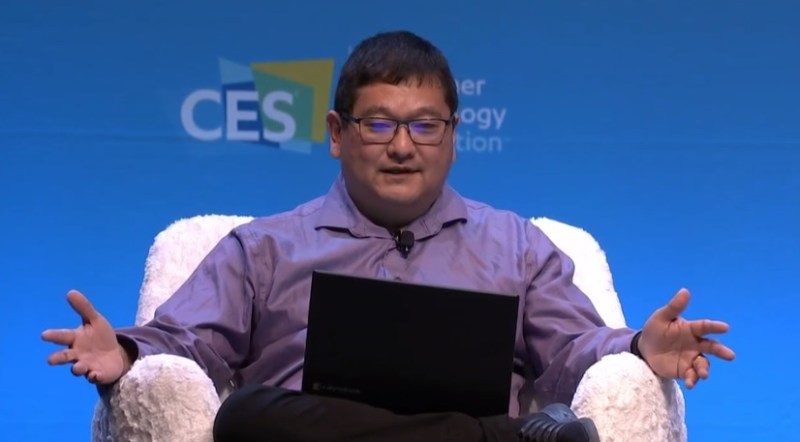
Above: Dean Takahashi is lead writer for GamesBeat.
Cella: I would add, to Bryan’s point there, which is exactly–I’ve been trying to convey that I think the authenticity concept in esports and gaming has been, historically, a little overblown. Some brands have been really scared. We’ve seen nothing but unanimous positive sentiment from consumers when brands come in and support what they’re passionate about.
I always say, any investment you make, whether you’re going to invest in the NBA or MLS or an esports league or with Twitch, you want to do it well. That goes without saying. I don’t think anyone is going to make a bad investment or not put a lot of thought into that execution. We’ve seen the fans just completely appreciate that brands like Coca-Cola and T-Mobile and others have come into support us.
I’ll give one example. Coca-Cola last year, during the Overwatch League playoffs, they bought a bunch of Overwatch League all-access passes from Twitch. It’s a joint product between our two companies. They just gave them away on a Twitch stream. It was a very simple thing. Obviously that doesn’t require a tremendous amount of brand integration. It was just giving back a very timely, relevant piece of value to fans. The chat was incredible. My point is, it doesn’t have to be overly complex. It can be pretty simple.
Dolan: I think people get concerned about this audience because the gaming consumer audience, at a high level, is very savvy. More likely than not your gamer is going to have a pop-up blocker, right? An ad blocker. As an advertiser you’re going to wonder how you can deliver ads to them. At the same time, if you do it in the right way, this is probably the most embracing audience. Especially right now, while gaming is still so nascent–any brands that come into the community and say, “Hey, this is important. We’re trying to make this bigger. We’re trying to invest in this community,” it’s been an overwhelmingly positive response on Samsung’s end as well.
Iooss: Staying on the Coca-Cola example, it showcases the concept of insteps, building blocks. It’s a great example of something simple that we did together. One takeaway from that was this ability to participate in the emotional aspect of esports and gaming. Coca-Cola has since done an amazing job being part of one of those pathways on Twitch. The moment someone becomes a partner is a place where Coca-Cola inserts itself and becomes part of that celebratory moment. What that is, it’s leaning into the emotion, the kind of emotion that’s always been there for traditional sports as well. It’s cool to see that. They tried something and they built upon it.
GamesBeat: There’s been a lot of hype around esports, and the scale of the investment — how soon you should invest, how you should be a pioneer but not get too far ahead — is a good question for a lot of brands right now. I bring up the example of Riot Games and League of Legends. It’s 10 years old. It has 8 million concurrent daily players. The League of Legends championships are huge. But Riot has said that it doesn’t make money on esports yet. The biggest esports game in the world doesn’t have a profitable infrastructure yet.
I think that should give everyone pause as far as the scale of what has to be accomplished here. Everyone wants to get to that profitable esports empire, but that’s going to take time, right?
Cella: We don’t have the same issue as far as our properties not being profitable. I would just say that it is possible. I go back to what we said at the start. It’s still a new investment for both Riot and Activision Blizzard and everyone else involved in the space. We’re going into our third season. Not to go back to our properties, but Overwatch League already had a higher 18-34 rating in the second season than some traditional sports, on a complete apples to apples, season to date–it’s the second season.
There’s nothing for us to be discouraged about. We feel great about it. Profitability will vary depending on the company, of course, but we’re absolutely in it for the long game here.
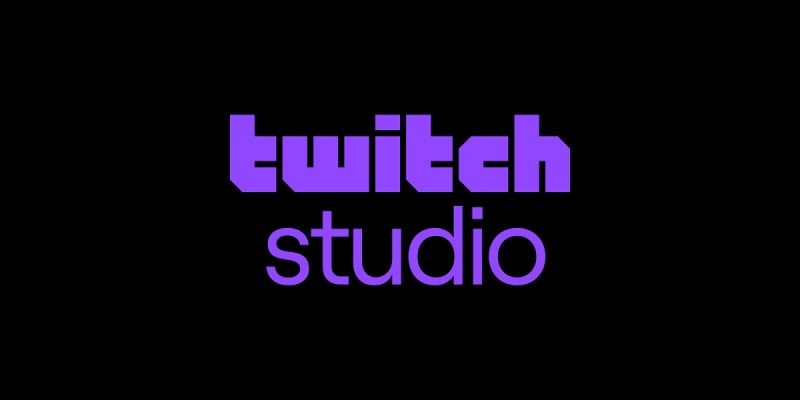
Above: Twitch Studio makes it easier to stream.
Iooss: I think it’s actually an opportunity for marketers, this pause or questioning about whether or not this is going to be a good investment. To provide a bit more qualitative data, we have a panel of 65,000 Twitch community members, and we’re constantly asking them questions so we can learn more about the audience. Right now they’re not necessarily correlating specific advertisers within categories with esports yet. That means there’s so much room and so much opportunity for brands to get involved and claim that space.
One example on Twitch that I’ve seen work very well is Honda and Team Liquid. It’s been incredible to see that grow and become what it has. Again, it was building blocks. Starting, being there, and then slowly, over time, being able to build that association by doing a lot of listening and spending a lot of time seeing what’s working and not working. But for marketers out there, this is a huge opportunity, because those associations are not established like they are in traditional sports.
GamesBeat: What are some best practices and some examples of success in this space?
Cella: We’ve sort of run the gamut on the different ways our sponsors will activate. With each league that we represent, Overwatch League and Call of Duty League — the ones we consider franchise, professional esports league — we only have six or seven category-exclusive sponsors. From a sponsorship perspective, if you think about the NFL having Gatorade on the sidelines, it’s those types of all-inclusive sponsors. In some cases you’re able to integrate product, if the product is relevant. In some cases it’s all about content. In most cases there’s a heavy focus on content development, social distribution of that content.
That’s another area where we differ from traditional sports leagues. I used to work at the NFL. They have a lot of control over their content and where that content goes. We came into this knowing that, one, maybe we could have an improved model over traditional sports leagues, and two, our audience is 100 percent on social all the time, communicating with their friends and communities. We’re very open with our content. When we develop content, whether it’s a series or a variety of content pieces with a partner, we let it get distributed everywhere. We let the client own it as much as we own it, and then everyone can distribute that. That’s really where the majority of the consumption will take place.
I would say, to answer this question and the previous one, we put a lot of effort into the execution, and it will be different for every client, of course. Everything we do is custom based on what the client’s goals and needs are. But there are a lot of checkpoints internally at Activision and Blizzard. We won’t really allow a bad execution. We have to go through our development teams, who are really the ultimate brand overseers for our leagues. They won’t let us do something that’s bad or inauthentic. We luckily have that. When you’re going through the process it can be frustrating at times, but the end result is a great execution that has a very good chance of resonating with the fans.
Dolan: I oversee a business, and ultimately for us–we can manage the success of tactical programs, but what we’re really looking for is two things. How is it moving the business, and how is it moving consumer sentiment?
Over the last couple of years we’ve carved out a gaming audience measurement plan. We’ve seen astronomical lift in brand sentiment, not just in awareness, but in consideration and another measure called PTO, or Proud to Own. Essentially, in a category like TVs, it’s so critical, because these consumers buy a TV every five to seven years. They have to be proud of the TV they own if you’re going to bring them back into the franchise. Then the other measurement is MPSA. If you had to pick one single answer, what brand would it be?
Within the gaming audience we saw double-digit growth across all four measures when we started talking a gaming audience with relevant gaming messaging in relevant channels about some of the things we were doing — not just with partnerships, but with our innovation. On the business end, we’ve seen tremendous growth in our QLED line, which has probably the most robust set of gaming features available today. Last year alone we sold 1.5 million units. We launched QLED for the first time in 2016. It’s astronomical.
So it’s working. This audience is receptive. We’re offering a product that they find to be valuable. We’re building a real relationship with consumers who game.
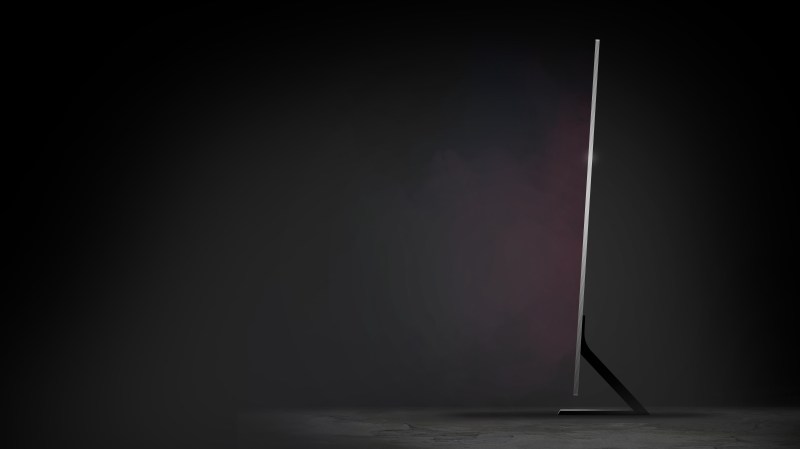
Above: Samsung’s Q950 TV.
Iooss: In the weeds, to go back to Samsung and Twitch working together, it’s drilling down as far as the language we’re using and tweaking one word in messaging, which is really important. But at a high level, it’s what we’ve always done in advertising. You want someone to feel something. In gaming it could be surprise and delight. It’s Wendy’s blowing up all the freezers in Fortnite. That’s exciting. You feel something from that.
On Twitch a best practice is, how are you giving back to the streamer community? How are you enabling something to let the community audience support the streamers? It’s exactly that. They’re there because they have an emotional connection to this, and you need to feel that in some way.
De Zayas: One of the biggest best practices we’ve been able to hold to–Dell and Alienware, we have a large scope and scale across a wide range of different targets, different audiences, and so on. But as a practice when we’re developing things, thinking about where to invest, what products we bring to market, where the right marketing partnerships are that we can pursue–what’s at the core of that is still the gamer sitting there playing a game, or the streamer who’s trying to figure out how to pay the rent through streaming.
What we’re trying to do is enable that gamer and understand what’s important to them. If you can figure that out around what your tech and your service does, then you’re going to ingratiate yourself with gamers. The rest is going to come with it. Then you’re going to have a following of people that want your product, that understand you care about them. Everybody up here understands that and is building products around that. All of those things come once you understand your role in the space and you’re able to deliver that to the audience.
GamesBeat: An area of potential and an area of difficulty is women in this space. 29 percent of esports fans are women. There was one report that said 62 percent of women esports fans do not believe that sports brands market to them. It looks like there’s a role for brands to play here in bringing a change to the market.
Cella: We completely agree. It’s an important initiative for us. We have one woman pro in the Overwatch League playing for the Shanghai Dragons, and we’d love to see more. It’s something that everybody here at our companies could help push along and need to push along.
Iooss: 50 percent of our panelists are women, so that’s a good start. I would say that it’s a problem, but also, again, a huge opportunity. What I’ve learned by being at Twitch is how nuanced this conversation needs to be. We definitely work on–a lot of advertisers come to us and say, “I want to support women in gaming.” But what does that actually mean?
You’re really talking about an identity story. When you’re doing that, the nuance is incredibly important. We’ve had some missteps. We’ve had some opportunities to learn. A lot of women in gaming, they don’t want to be called “female gamers.” They want to be gamers. They want that equality. As an industry we have to tune into that. We have to be honest with each other and talk about it.
In particular we need to listen to women who are doing it themselves. They’re young, as all esports athletes are. We should be listening to them and supporting them in a way that is real — not just about “women in gaming” as a container, but as something broader and something we can push forward.
Dolan: From the brand side, for us, the advertising we create needs to depict women and men gaming. The reality is that a woman can love gaming just as much as a man, and they do. So why are we making this distinction in the way we depict this passion area? That’s the first step, and then it’s making sure that we’re talking to our gaming audience and understanding her needs. What are their different needs? And then accounting for that. Do we build products that potentially suit the needs of one consumer more than the other? Maybe. These are all things we’re trying to figure out and learn. But it starts with a commitment to this woman.
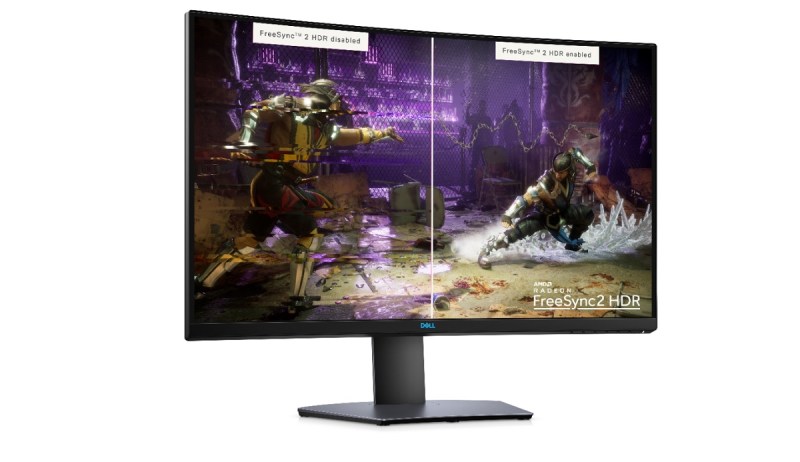
Above: Alienware 32-inch monitor
De Zayas: We need to make sure–we’ve been having a lot of this conversation. I think we need to start with a safe zone for young girls to understand that it’s safe for them to play games in a certain community. Because it’s not always safe. It’s a very personal topic to me. I have a 10 year old daughter who loves playing games, and I hear the things that are sometimes said, or the things that are sometimes not said. It’s not always the safest environment.
What all of us on this panel, and in this entire industry–we have a role to play in helping enable young girls to understand that, hey, as you grow up, you can enjoy your hobby. Don’t drop it. Whether you’re pro or not, enjoy what you enjoy. And we can make it easy for them to enjoy it. Have we cracked the code? Absolutely not. It’s probably the most difficult work we have ahead. But we need to go figure it out.
